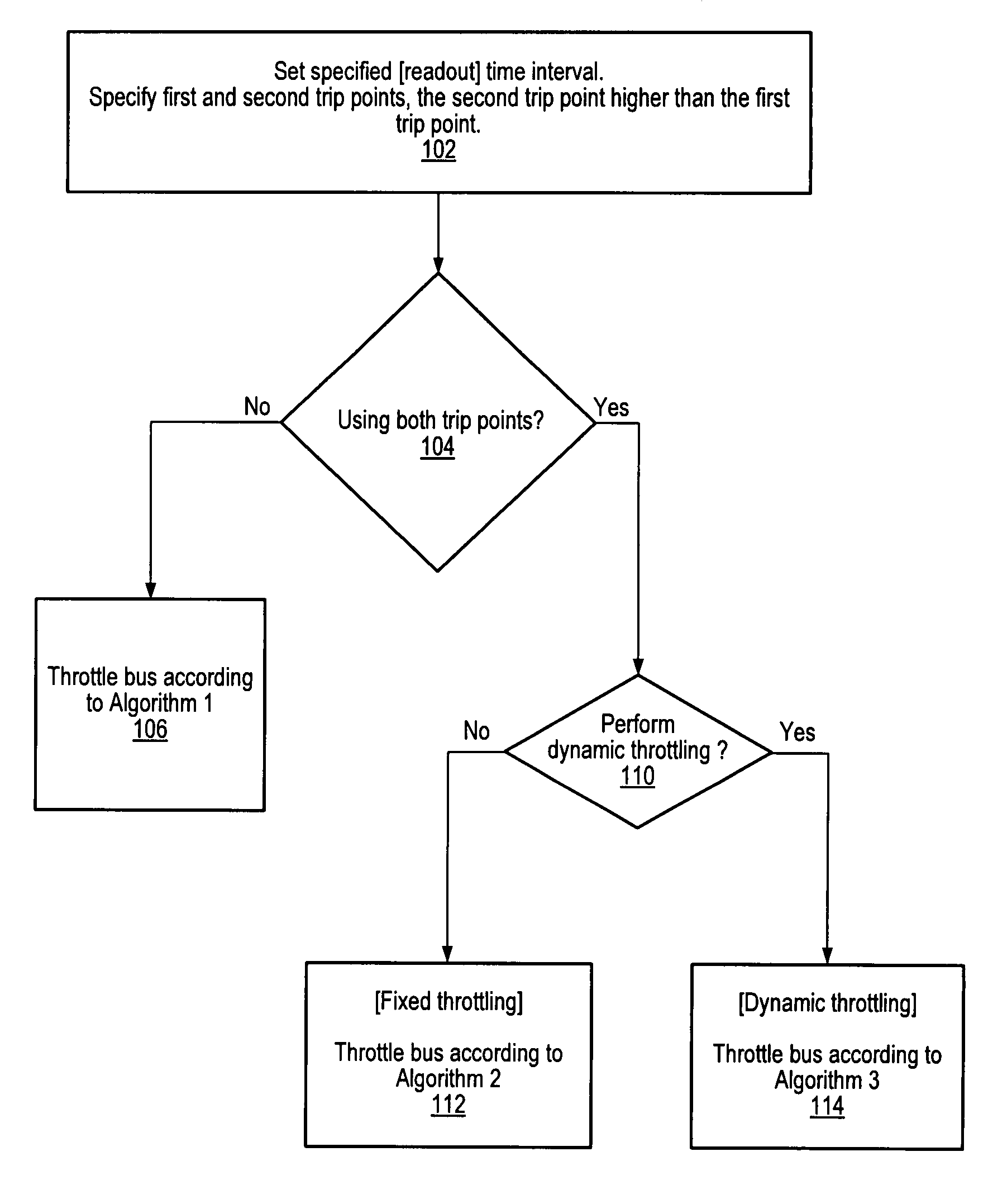Temperature throttling mechanism for DDR3 memory
a temperature throttling mechanism and memory technology, applied in the field of memory controller design, can solve problems such as reduced thermal output, prone to operational variance, and potential memory-related reliability issues, and achieve the effect of optimal combination of performance and safety
- Summary
- Abstract
- Description
- Claims
- Application Information
AI Technical Summary
Benefits of technology
Problems solved by technology
Method used
Image
Examples
Embodiment Construction
[0024]FIG. 1 shows a block diagram of a basic exemplary system 100, which may be a computer system, in which a processing unit 100 is configured with a processor core 101, coupled to a memory controller 103. Memory controller 103 may be coupled to a memory bus 111, through which memory controller 103 may regulate access to memory 105, to facilitate data exchange between processing unit 100 and memory 105. Those skilled in the art will appreciate that system 100 may be implemented in a variety of ways, and is shown simply to illustrate a basic configuration in which memory access is controlled by a memory controller.
[0025]In one set of embodiments, memory controller 103 may comprise a control unit 107 coupled to an internal register 109. Various embodiments of memory controller 103 may include other subcircuits and / or components, including additional registers for supporting a range of functionality as required by the needs of system 100. For example, memory controller 103 may includ...
PUM
 Login to View More
Login to View More Abstract
Description
Claims
Application Information
 Login to View More
Login to View More - R&D
- Intellectual Property
- Life Sciences
- Materials
- Tech Scout
- Unparalleled Data Quality
- Higher Quality Content
- 60% Fewer Hallucinations
Browse by: Latest US Patents, China's latest patents, Technical Efficacy Thesaurus, Application Domain, Technology Topic, Popular Technical Reports.
© 2025 PatSnap. All rights reserved.Legal|Privacy policy|Modern Slavery Act Transparency Statement|Sitemap|About US| Contact US: help@patsnap.com



